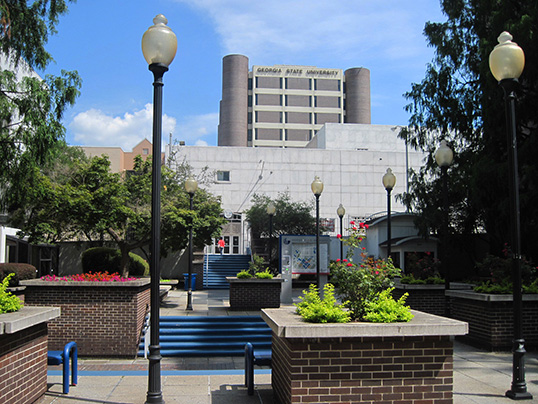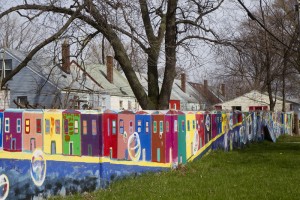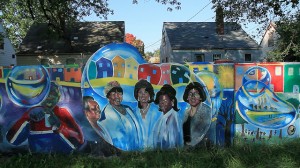“An implicit rather than explicit principle for the conservative and male-dominated design professions, it will not be found stated in large type in textbooks on land use.” (Hayden S170)
“Dwellings, neighborhoods, and cities designed for homebound women constrain women physically, socially, and economically.” (Hayden S171)
“White, male skilled workers are far more likely to be homeowners than members of minority groups and women, long denied equal credit or equal access to housing.” (Hayden S171)
“Men were to receive “family wages,” and become home “owners” responsible for regular mortgage payments, while their wives became home “managers” taking care of spouse and children.” (Hayden S172)
“In a brilliant discussion of the “patriarch as wage slave,” Stuart Ewen has shown how capitalism and antifeminism fused in campaigns for homeownership and mass consumption: the patriarch whose home was his “castle” was to work year in and year out to provide the wages to support this private environment.” (Hayden S172)
“Women who stayed at home experienced what Betty Friedan called the “feminine mystique” and Peter Filene renamed the “domestic mystique.”” (Hayden S173)
“According to Colleen McGrath, every thirty seconds a woman is being battered somewhere in the United States.” (Hayden S175)
“She finds that matching her complex family requirements with the various available offerings by landlords, employers, and social services is impossible.” (Hayden S175)
“The problem is paradoxical: women cannot improve their status in the home unless their overall economic position in society is altered; women cannot improve their status in the paid labor force unless their domestic responsibilities are altered.” (Hayden S176)
“In general, feminists of that era failed to recognize the problem of exploiting other women workers when providing services for those who could afford them. They also often failed to see men as responsible parents and workers in their attempts to socialize “women’s” work. But feminist leaders had a very strong sense of the possibilities of neighborly cooperation among families and of the economic importance of “women’s” work.” (Hayden S179)
“Suppose forty households in a U.S. metropolitan area formed a HOMES group and that those households, in their composition, represented the social structure of the American population as a whole. Those forty households would include: seven single parents and their fourteen children (15 percent); sixteen two-worker couples and their twenty-four children (40 percent); thirteen one-worker couples and their twenty-six children (35 percent); and four single residents, some of them “displaced homemakers” (10 percent).” (Hayden S181)
“In creating and filling these jobs it will be important to avoid traditional sex stereotyping that would result from hiring only men as drivers, for example, or only women as food-service workers.” (Hayden S182)
“Women must transform the sexual division of domestic labor, the privatized economic basis of domestic work, and the spatial separation of homes and workplaces in the built environment if they are to be equal members of society.” (Hayden S187)
“When all homemakers recognize that they are struggling against both gender stereotypes and wage discrimination, when they see that social, economic, and environmental changes are necessary to overcome these conditions, they will no longer tolerate housing and cities, designed around the principles of another era, that proclaim that “a woman’s place is in the home.”” (Hayden S187)






